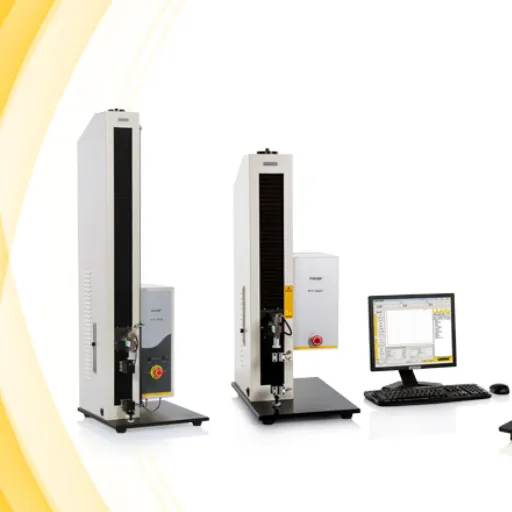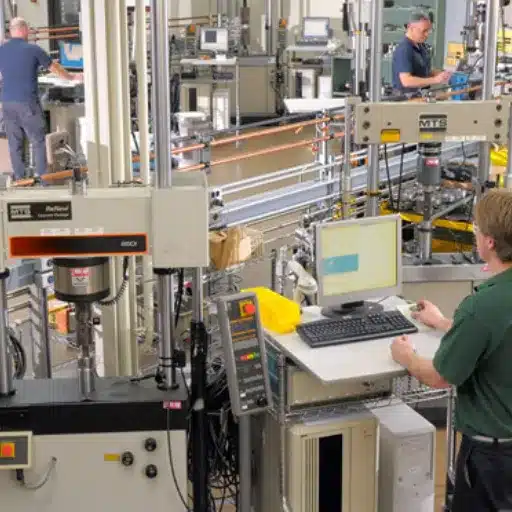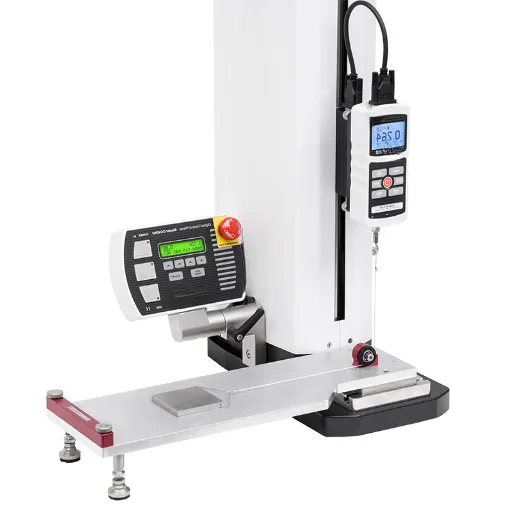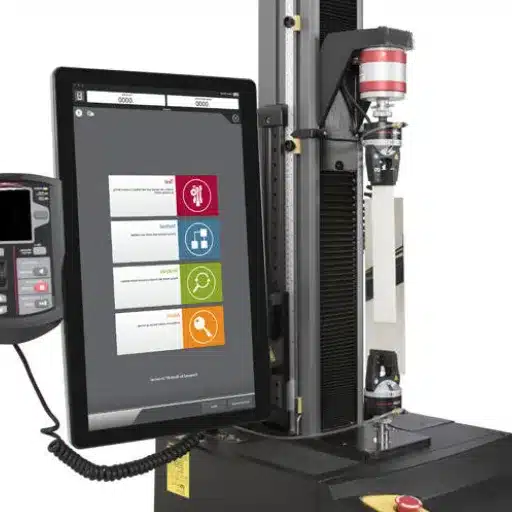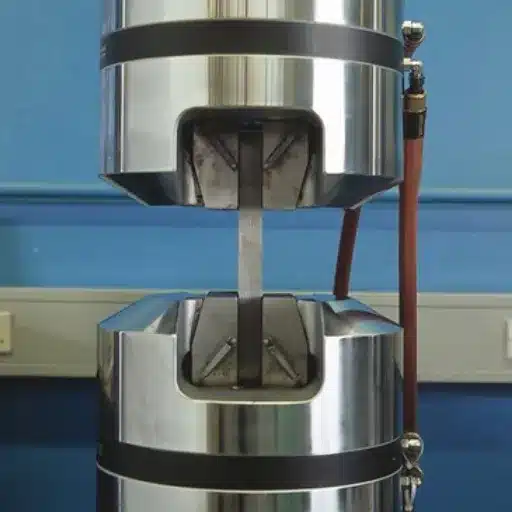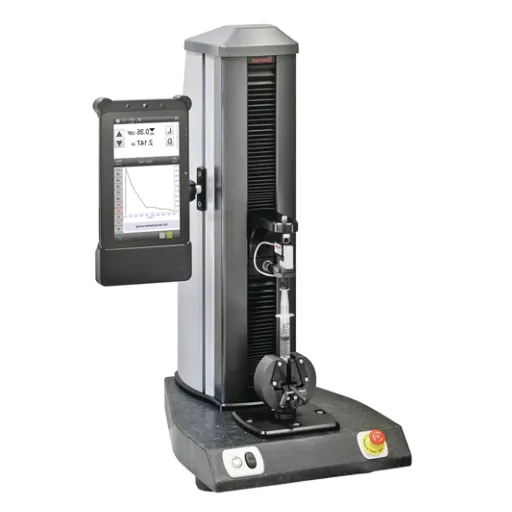Break tests have become crucial in testing material durability and worthiness across many industries. From manufacturing to architecture and even consumer goods-wearing break strength testing fits safety and quality to performance under actual scenarios. But what does the break test measure, and why is it such an important process, depending on the application? This article attempts to discuss the science behind and the need for break tests, the method of application to the industry, and things to consider. If you are in the industry or just curious about material testing, this guide will enlighten you about all things relating to measuring break strength.
Introduction to Break Strength Testing
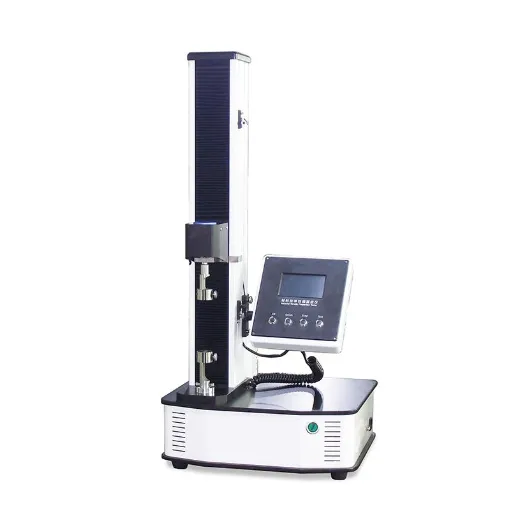
Definition of Break Test
A break test-and sometimes used epithelial term-is used to determine what is the maximum stress or force that a material can withstand before it fractures. The process determines tensile strength of a material which is the most basic property to check durability, performance, and safety in any application. As an increase in tension is applied, breaking points of materials are found, providing important data for manufacturers and engineers.
Break testing is vital in quality control and assurance. In any industry, be it construction, automotive, aerospace, and so on, it is crucial to know how materials will behave under stress if you are to build a safe and efficient product. Break tests help manufacturers establish if a material complies with industry standards and regulatory requirements. This process minimizes the risk of failure during actual application, increasing safety and saving costs should any malfunction occur.
Generally, in performing a break test of the materials, the piece is secured in a testing machine applying a pulling force gradually to higher values until it fails. Values and measurements are recorded and analyzed for some particular characteristics of the material like elongation, ultimate tensile strength, and break point. The whole procedure gives great insight into all the properties of the materials so that subsequently help in making decisions in selecting materials and designing products and structures thereby improving efficacy and long-term reliability for those industries.
Importance of Measuring Break Strength
The test of break strength is critical for safety, reliability, and functionality across materials used in industries. Break strength is the maximum stress or force that a material can endure before going into failure or breaking. It is a principal characteristic in industries such as construction, manufacturing, aerospace, etc., where materials face high loads and stresses.
Knowing the break strength of different materials, engineers can pick one of the many already available materials that fit their needs. This prevents the material refracting into patient accidents, product malfunctions, or structural collapses. For example, in construction, when using materials weak in break strength, they could jeopardize the structural integrity of bridges or buildings, forming safety hazards.
While on one hand, break strength testing helps verify the existing safety standards and regulations protecting affordability and society, it also ensures that cost is kept down by avoiding over-engineering. The break strength measurement leads to reliable and strong products, promising performance under demanding conditions over time.
Applications Across Industries
Lying at the heart of safety, performance, and health hazards, break strength testing finds uses in various industries. In the construction industry, this testing is carried out to check the endurance of materials like steel, concrete, and cables for building safety so that constructions maintain minimal risk of failure under heavy occupancy of use or extreme conditions. This ensures the adverse safety of the public.
The aerospace and automotive industries heavily depend on break strength testing to evaluate wires, fasteners, and composite materials used in their long-stressful procedures. Materials that can technically work under a lot of stress are always needed to inure in the industry, keeping roadways and airways at their levels of variable conditions such as high-speed pressure and change of temperature.
The textile and manufacturing industries carry out break strength testing to check on the quality of fibers, fabrics, and industrial materials such as ropes and chains. Knowledge on the limits of these materials enables manufacturers to produce goods that meet specifications laid out for durability and performance, issues affecting consumer safety and efficiency in work as well as in different settings.
Types of Break Strength Tests
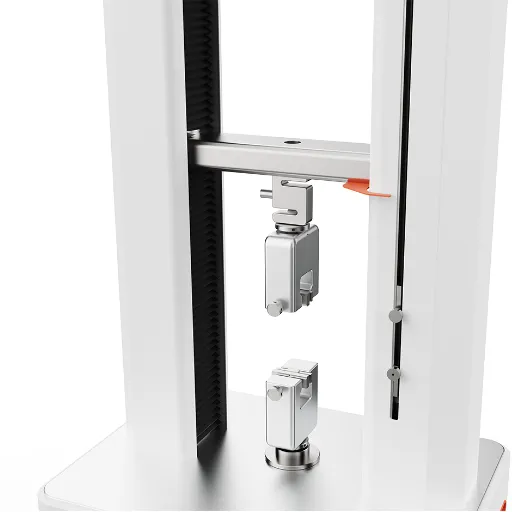
Tensile Tests
Tensile tests are conducted to determine the strength and elasticity of a material under tension. The test measures the magnitude of the force required to break or rupture a material. A tensile test provides essential information about the breaking strength, elongation, and other mechanical properties of the material by pulling the material with an increasing force.
These tests find applications in construction, textile, and manufacturing industries. They guarantee that the material behaves within safety and performance parameters under stress. Tensile tests on fabrics are conducted to test their strength for industrial and commercial applications, whereas testing on metals and polymers verifies if they are fit for structure- or load-bearing applications.
The sample is fixed into a tensile instrument which proceeds to stretch and eventually break it. During the stretching, parameters are measured that will help calculate properties such as ultimate tensile strength, yield strength, and modulus of elasticity. These parameters help engineers and manufacturers to select conjoint application materials.
Flexural Properties Testing
Flexural properties testing determines a material’s resisting power to deformation due to applied load. This test is especially important for the materials that may go under bending stresses while being employed, like beams, panels, or structural members. Common flexural properties evaluated include flexural strength, flexural modulus, and flexural strain.
The test is carried out using a three-point or four-point bending apparatus that acts over some force on the material under test at various points, to evaluate how the material reacts thereto. Paramters such as the maximum force the material can withstand before it bends or breaks are recorded, and from this information about the stiffness and strength of the material and in general, its durability can be derived from.
Flexural testing has wide applications in industries like construction, aerospace, and automotive manufacturing. These ensure that the engineers will be able to determine whether the given material satisfies the mechanical requirements for the purposes it is intended to be used for, thus making sure of functionality and safety. Having a full comprehension of these properties allows manufacturers to engineer and produce materials and components that perform adequately under given loading condition.
Thermal Break Strength Testing
Thermal break strength testing is fundamentally meant to determine how materials stand up against extreme temperature fluctuations. Such testing is of utmost importance in fields where materials can be subjected to fluctuating thermal conditions, such as construction and aerospace, by way to further assure that the components remain workable and safe through time. Under testing conditions, the materials are exposed to temperature variations with an aim to observe their resistance to thermal stresses and maintenance of their mechanical properties.
The basic purpose of thermal break strength testing is to allow the detection of any structure or device’s potentially harmful failure modes, such as cracking, deformation, or loss of strength, that would affect their safe and efficient functioning. By knowing the response of materials to high and low temperature, manufacturers are equipped with the ability to select materials suitable for their environment that are stronger in resistance.
Such tests hone the quality and life of a product, and the possibility of product failure before use in the field is considerably mitigated. By way of the analysis of performance test data, engineers/manufacturers can decide on the acceptability/level of thermal performance of a material that is required in applications where such performance is critical.
Effective Methodologies for Break Testing
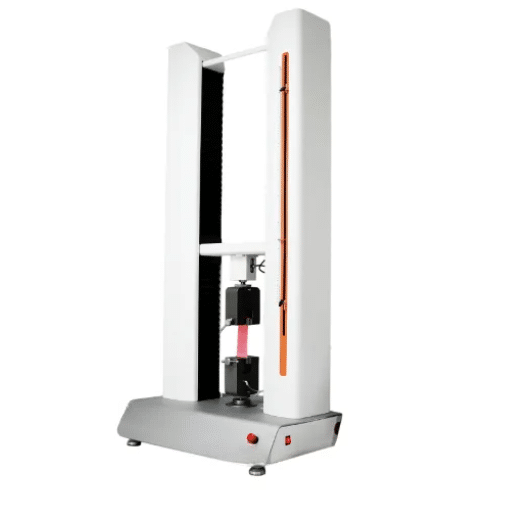
Standard Test Methods
Break tests undergo several standardized approaches to ensure accurate and reproducible assessment of an item’s strength and failure points through simple but rigorous procedures. These test methods generally involve tensile-testing, compression-testing, and impact-testing, and investigate how a test specimen responds under well-defined stress conditions. Tensile tests indicate the highest force a specimen can sustain while suffering a pulling action; compression tests evaluate the behavior of the specimen when compressed. In contrast, impact tests rate its ability to withstand energies arising due to shock or sudden forces.
The selection of a method cited arises from the material and the application for which it is intended. Thus tensile tests may be most widely used for metals, plastics, and composites to provide information regarding their ultimate tensile strength and elongation. Compression tests are essential for materials such as concrete or ceramics that usually encounter compression forces in service. Impact tests, e.g., Charpy or Izod tests, are useful in shedding light on toughness and resilience in materials subjected to sudden impacts.
These test methods are made reliable by referring to standards issued by agencies such as ASTM International or ISO. Such standards cover all aspects like the method used, test equipment, and testing conditions, thus assuring a reproducible set of results that can be compared. Such a standardized approach provides engineers and manufacturers with the crucial information for their decisions in relation to selecting materials for a particular purpose, safety considerations, and long-term durability.
Manual vs. Automated Testing Approaches
For execution, efficiency, and applicability, manual and automated testing have differences. Manual testing requires the manual intervention of a tester to execute the procedures stepwise and observe and record outcomes. This is best used for situations that require human judgment, like usability testing or tests that involve a very intricate, nuanced evaluation that an automated system simply cannot do with any degree of accuracy. On the downside, it is time-consuming and error-prone.
In contrast, automated testing uses a software tool to execute the tests and to compare actual results with expected results. It is suitable when tests have to be repeated many times or in regression testing, where consistent execution of tests is the key. It increases efficiency and accuracy, especially when conducting distributed bulk operations or working with extremely large datasets. However, automated testing can be very costly to set up and requires considerable knowledge of writing test scripts.
Choosing between the two depends on what the project needs, which resources are available to the parties involved, and what that operational nature is all about. Automated testing is best when the project is subjected to many iterations or repetitive in nature. On the other hand, when precise feedback or flexibility is required, the manual method is a better fit. Usually, a combination of both methods produces the best results.
Specimen Preparation and Gauge Selection
Prior to the conduct of any test, specimens should be adequately prepared to ensure accuracy and reliability of testing results. Such preparation entails the thorough cleaning of specimens to get rid of dirt, grease, or any other residue that may impede test results. The specimen should also be subjected to dimension verification to ascertain that these dimensions conform to the standards or specifications for testing, aiding uniformity in all tests conducted.
Gauge selection means the choosing of gauges or instruments to measure properties desired for the specimens. Factors on the selection process are the material to be tested, types of measurements required (stress, strain, thickness, etc.), and the level of accuracy required for the application. A proper gauge ensures the accuracy of measurements and reduces errors.
Both specimen preparation and gauge selection are very important towards obtaining relevant results. Ignoring these two steps can lead to misleading findings or inconsistent results with flawed conclusions. Therefore, by selecting the right gauges and properly preparing the specimens, the reliability and repeatability of the whole testing procedure are greatly increased.
Benefits of Conducting Break Strength Tests
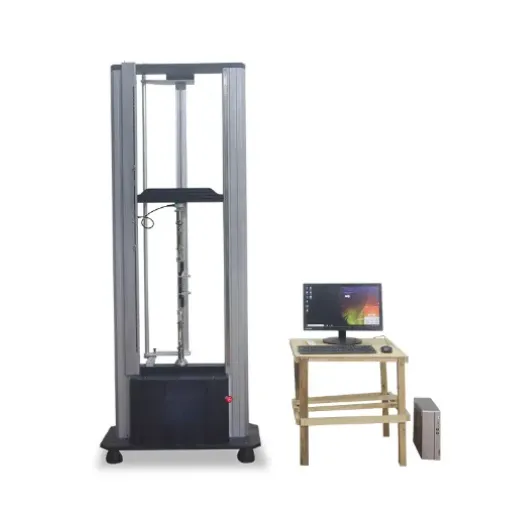
Quality Assurance and Material Performance
A break-strength test finds an important role in quality assurance, where it provides information about the durability and the reliability of a material. It measures the amount of force to rate if the product meets level standards, and the force that can be put on the material under hard actual-world conditions, not potential ones. This testing aids in detecting a weakness pattern in the material so only the finest quality materials are used in production.
When it comes to actual material performance, break strength testing is used to give objective measurements for comparing different materials. The tests enable the company to check the break strength of materials and select the one best suited for their application. Knowing the level of performance or metric value-meaning the amount of maximum force that can be resisted-leads to manufacturing safer and better solutions in industries like construction, automotive, and packaging.
In short, break strength tests foster safety and cost efficiency. Testing reduces material failure chances that are either subject to costly repairs, recalls, or endangering hazards. Through testing, organizations are guaranteed to determine the material best suited for their performance needs, thus avoiding the needless expense of wastage and, above all, decreasing working life and reliability of the said product.
Cost Reduction and Resource Management
The break strength tests play an imperative role in reducing costs arising from minimizing material failure. Using the right materials for a particular application means that resources are used appropriately and that expenses really do not build up in repairs, recalls, or further replacement of defective items.
These types of tests aim at ensuring sustainable and efficient use of resources by doing away with wastage. Once the strength and limitations of a material are enough understood, producers can fine-tune the production processes and further ensure that raw materials are not overused, making industrial operations more cost-effective and environmentally visible.
Break strength tests have a bearing on enhancing operational efficiency through increased reliability and enhanced life cycle. Materials therefore, with a longer lifespan, require fewer replacement and less maintenance hence minimizing overall costs in the longer run and hence carving a huge path for the well-targeted utilization of resources. Such testing is prerequisite to both industrialistic economic and sustainable goals.
Regulatory Compliance and Standards
Regulatory compliance and adherence to standards are thus essential to check that break strength tests correspond to the value of safety, performance, and sustainability that are desired. These standards are usually set by recognized organizations to impart uniformity and reliability in testing methods across various industries. Through conformity with such regulations, manufacturers and operators exhibit their stance toward quality and safety.
The break strength standards are concerned primarily with thresholds regarding acceptable material performance under stress. Guidelines are issued defining the minimum force that a material has to withstand for a particular application before failure can be said to be useful. Application of these standards in industrial use protects operations, insurance, and legal ramifications due to risk from accidents or malfunction.
Following strictly the regulatory standards yields other benefits such as gaining consumer trust, fulfilling the criteria for certification, and being eligible for foreign trade. This acceptance from the international level is significant to those companies planning to go global. Hence, when it comes to compliance with regulation of the break strength test, it is more than just an issue of legal compliance; it is in itself a step toward ensuring that the firm can sustain and operate efficiently in the long run.
Challenges and Pitfalls in Break Strength Testing
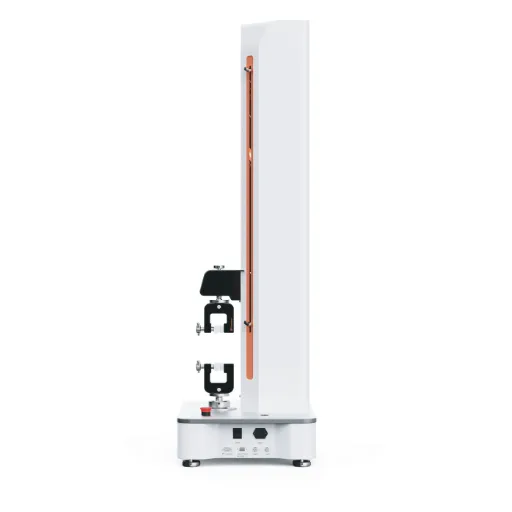
Common Errors in Measurement
Among the most frequent errors committed during break strength testing is the miscalibration of the testing equipment. Miscalibration of the equipment will cause the testing result to differ in magnitude from what the actual break strength values are. This results in erroneous judgments about the quality and safety of the material. Care should therefore be taken, through regular upkeep and periodic calibration, of the equipment and tools used to ensure accurate measurement and conformity with testing standards.
Another common error is incorrect preparation or handling of test samples. If results are to be reliable, test specimens must be consistent with specified dimensions, conditions, and procedures. Incorrect specimen preparation, like un-even cutting or wrong alignment for testing, may cause inconsistent results. Strict adherence to instructions for sample preparation is, therefore, required to overcome this hurdle.
Measurement errors may also occur due to environmental factors. Fluctuations in temperature, humidity, or atmospheric pressure may affect testing conditions and hence the results. These discrepancies should be prevented by having the testing environment controlled and monitored according to the stated requirements. Addressing these common sources of error will make the break strength test more reliable and repeatable and ultimately lead to efficacy in quality assurance activities.
Interpreting Results Accurately
For accurate interpretation of a break strength test, it becomes essential that all measurements take into account the standards set for the tests; in other words, it should always be within the force thresholds that were set during material or product development. A departure from these force removal thresholds could hint at a defect being present or, in other words, a disparity in material quality.
The next step in analyzing the data is to compare the average break strength values against the limits set for the acceptable range of the material. Also, variability among the test samples should be examined for patterns that might point toward such weaknesses as faulty manufacturing processes or substandard materials. Tracking such trends in variance can help to identify exact causes for the potential defects.
Finally, the results must be fully recorded with transparency and traceable methods, conditions, and equipment. This allows future audits or retests from the same tests to be conducted under consistent terms. Another aspect of clear data interpretation is to enable clear references for all stakeholders in their decisions regarding quality control and process improvements.
Addressing Variability in Specimens
Variability in specimens can result from variations in material properties, environmental conditions at the time of collection, environmental conditions during testing, or differences in handling and preparation. Thus, it is recommended that whenever possible, specimens be collected, stored, and processed according to a standard set of procedures. Such uniformity in specimen preparation procedures would allow for minimal variations in the samples and ensure that results are consistent and accurate across all tests.
Alongside specimen preparation, there must be provision for constant calibration and maintenance of all test equipment. Calibration aligns the gauge with accepted standards, thereby reducing discrepancies resulting from instrument-related variables. Likewise, controlling the test environment, particularly temperature and humidity, helps reduce factors external to specimen behavior or performance in the scrutiny.
Once variability has been characterized for a set of samples, more advanced statistical analyses can be applied to identify the cause. Certain tools-an analysis of variance or regression-may be used to search for patterns that contribute to variability in order to improve testing and equipment and thus facilitate higher reproducibility and reliability of results. This leads to better-informed interpretations and process optimization.
Frequently Asked Questions (FAQ)
Q: What is a breaking test?
A: Breaking test refers to a method wherein one determines the breaking load and the point of failure of any material or product. The tensile or compressive load required to break the sample promotes an understanding of the nature of its strength characteristics.
Q: Why is the breaking load important?
A: The breaking load tells us the load-force applied on a material to make it fail. Identifying such a force value is useful for safety-wise and performance-wise contributions of the products in respective applications.
Q: How are breaking tests performed?
A: Naturally, in performing a breaking test, the sample is held in a fixture by a technician, who then proceeds to apply force through a hydraulic or mechanical system. The operator will record the peak load measurement once the sample breaks for further analysis of breaking strength characteristics.
Q: What kind of equipment is used in breaking tests?
A: Classically, there have been three equipments-the extensometer, which measures deformations; the crosshead, which applies force; and the load cell, which applies and measures tensile and compressive loads. All of the above ensure that the results from a testing session are precise.
Q: Which materials can be subjected to breaking tests?
A: Breaking tests can be carried out on a large variety of materials, such as aluminium metals, plastics, and composites. Whereas each of these materials varies in their inherent properties affecting their breaking load and failure mechanism.
Q: How do temperature and geometry affect breaking tests?
A: Change in temperature and geometry greatly influences breaking strength. A change in geometry or shape changes the distribution of stresses within the body, thereby modifying the value of breaking load.
Q: What purpose does a break detector serve in breaking tests?
A: A break detector is indispensable in breaking tests, as it sends signals immediately upon the failure of the sample during the test; moreover, it also provides feedback on the force measurement so the failure point is accurately determined.
Q: Can breaking tests be optimized for certain materials?
A: Indeed, breaking tests can be optimized by changing the various testing requirements, which include the rate of load application, the type of fixture being used, and so forth. This optimization facilitates the perfect characterization of the material’s behavior under varied conditions.
Q: What importance does stress-strain analysis hold in breaking tests?
A: Stress-strain analysis is eminent in breaking tests because it gives a graphical illustration of the behavior of material under applied load, helping in understanding the material elasticity, yield point, and generalized strength characteristics.
Q: How would you describe the differences between manual testing and automated breaking tests?
A: Manual testing involves the application of loads and recording of data by technicians which may produce variance. On the other hand, automated breaking tests provide more precision and repeatability in results as they are executed by a programmed control system for load application and data recording.
References
-
Break Strength Testing – Ametek Test: Provides insights into force measurement instruments and materials testing machines for break strength testing.
-
Measure Tensile Strength and Breaking Strength – Stable Micro Systems: Explains how to measure tensile and breaking strength using a Texture Analyser.
-
Break Strength Testing – Nicol Scales: Discusses the tensile or compressive load required to fracture or cause a sample to fail.
-
Tensile Strength vs. Break Load – Presto Group: Explores the difference between tensile strength and break strength, and why it matters.
-
Breaking Strength Test – Labthink International: Covers tensile breaking strength tests and breaking strength tests for various applications using Labthink XLW series testers.

